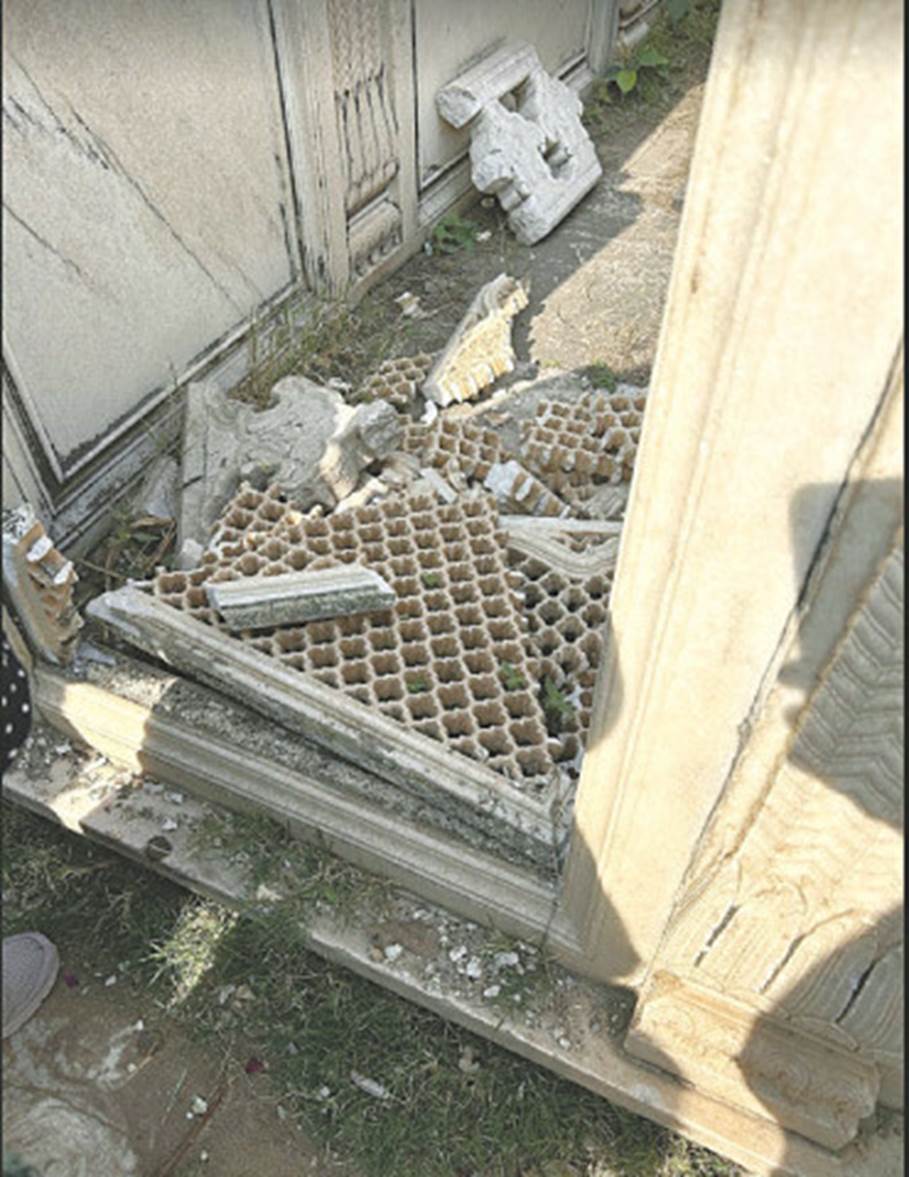
Vandals have destroyed part of the jali (railing) in front of the tombs of three Mughal emperors and Bahadur Shah II’s empty tomb—X/@sunitarora
Vandalism at Delhi’s Mughal Mausoleums Sparks Outrage
A part of the jali or railing in front of the tombs of three Mughal emperors, as well as Bahadur Shah Zafar’s empty tomb, at Zafar Mahal in Delhi’s southern Mehrauli village has been vandalized, triggering outrage on social media.
The incident drew sharp criticism from many, particularly heritage lovers.
Historian William Dalrymple while taking to X, formerly Twitter, said in a terse comment, “Appalling- and appalling negligence by the ASI”. His comment apparently referred to the Archaeological Survey of India.
Mr Dalrymple, author of The Last Mughal and several other acclaimed books, was commenting on a tweet that carried a picture showing the broken jali in front of what appears to be a grave. The picture carries a caption that read, “Someone has attacked and destroyed India’s last Mughal tomb. One jali is [sic] completely smashed and the other is damaged.”
Confirming the incident, journalist Sunit Arora wrote on X on Sunday, “Reporting vandalism at Zafar Mahal in Delhi’s Mehrauli village.”
Mr Arora quoted the guard as informing him that “8 days ago, vandals destroyed” part of the jali in front of the tombs of three Mughal emperors and Bahadur Shah II’s empty tomb.
Since Bahadur Shah Zafar is buried at Yangon in Myanmar, the historian’s remarks generated a debate of sorts on the micro-blogging site.
Some users expressed surprise over the claim it was the emperor’s burial site, while others questioned which Indian institution was responsible for its care.
In reply to a question whether the place is not owned by waqf, Mr Dalrymple said ASI looks after the monument.
Adjacent to Moti Masjid are the graves of the Mughal royal family. According to monumentsofdelhi.com , two predecessors of Bahadur Shah Zafar — his father Akbar Shah II and grandfather Shah Alam II — are buried there. Besides, one of Bahadur Shah Zafar’s sons is also said to be buried there.
It is said that Bahadur Shah Zafar wanted to be buried next to his father in the Sardgah, the marble enclosure, at Zafar Mahal. However, in 1858, he was exiled to Yangon in the British-controlled Burma, where he died on Nov 7, 1862.
Zafar Mahal was built by Akbar Shah II in the 18th century, according a report published by The Wire . The building was then called Lal Mahal and Rang Mahal. Later, Bahadur Shah Zafar built the Hathi Gate and eventually gave it its present name, the Zafar Mahal.
The ASI earlier reportedly said they would restore Zafar Mahal in October, but they never did. “This is so, so sad! Legal action should be taken against ASI for this negligence. They have let the palace to ruin for years! This needs to stop,” one X user said. - Dawn

